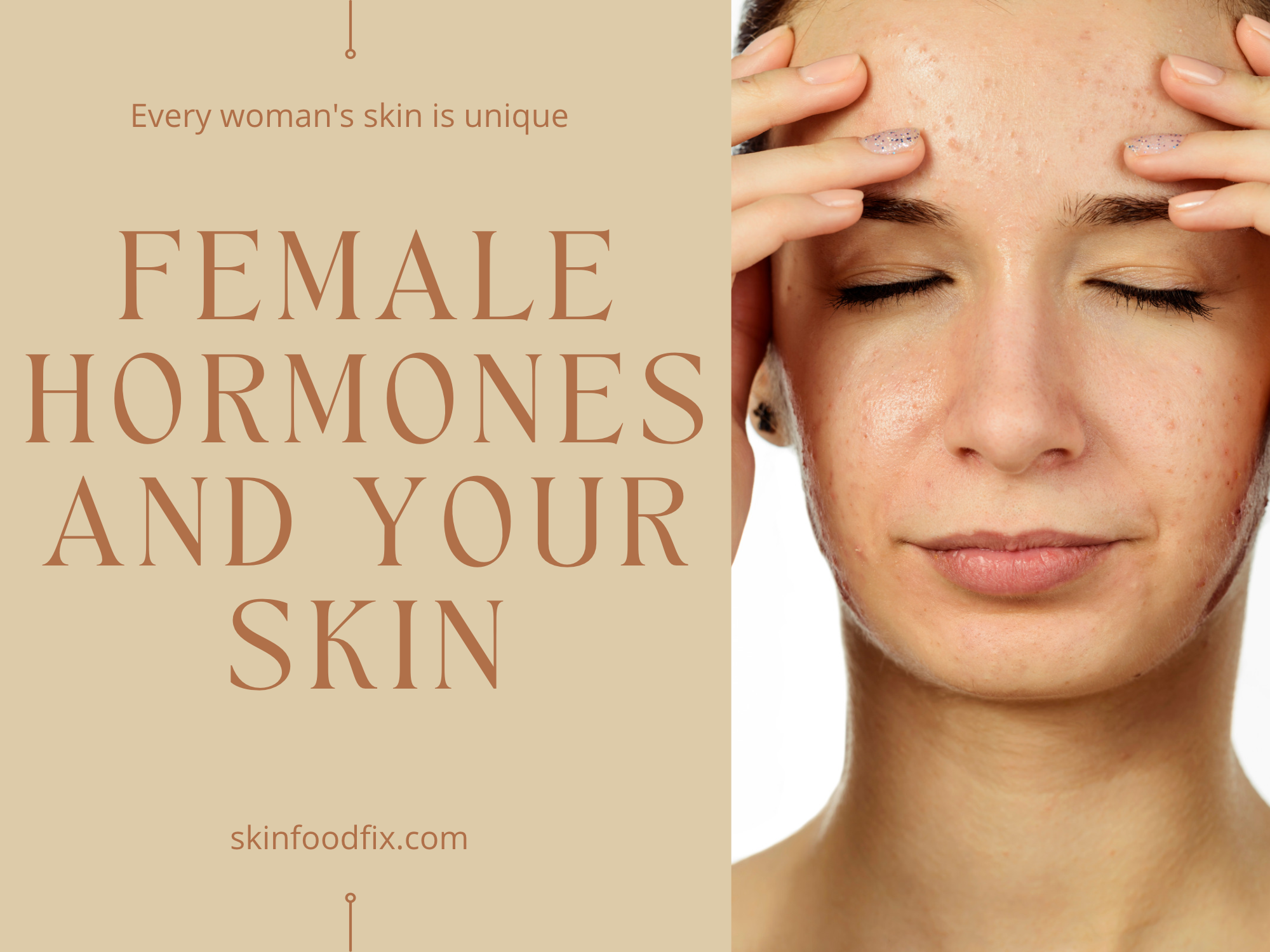
We all know that acne is extremely common in our teenage years due to the rise of our hormones, but acne can happen at all ages due to hormonal imbalances. These imbalances happen during your menstrual cycle, while you're pregnant, and even during menopause. Hormones exist in a delicate balance in your body, and even a small increase in one hormone can have a noticeable effect on your health and skin appearance.
As a woman you have small amounts of testosterone in your body, which are essential for your energy, strength, and fitness. During puberty is when the initial surge of testosterone happens. In females, testosterone is produced in the ovaries, adrenal glands, fat cells, and skin cells where it is then converted into estrogen (the female hormone). Testosterone, the androgen hormone, is typically your culprit for acne breakouts. Your body can produce more androgens than it needs, and can cause excess sebum production which leads to clogging of the pores and inflammation. These breakouts are usually seen on the face, back or chest. They are more likely to appear on the forehead than the other parts of the face, such as the cheeks, because sebum levels are higher in this area. Keeping your skins pH balanced can help with breakouts, our Tea Tree Toner is a great product for this.
Menstrual Acne
The boost in androgen production usually occurs at the same time of your period (and during pregnancy.) Hormonal acne is also connected to low levels of hormones called estrogen and progesterone.
The menstrual cycle usually lasts for 28 days, and each day is different hormonally. On days 1 to 14 two hormones are released by the pituitary gland, the Follicle Stimulating Hormone (FSH) and Luteinizing Hormone (LH) which control the function of the ovaries and their hormone production. Estrogen (a hormone which promotes female characteristics) becomes dominant over progesterone (a hormone which helps prepare the female body for conception and pregnancy). On days 14 to 28 Progesterone levels rise where it becomes the dominant hormone, which increases stimulates sebum production, and estrogen levels drop. Shortly before bleeding begins, both progesterone and estrogen levels are at their lowest, and testosterone is at a higher level than the female hormones, causing more sebum production. Premenstrual acne usually starts to appear between days 18 to 21.

The reasons for hormonal acne are still unclear, but some researchers think that before the period starts, there is not enough estrogen to promote its “anti-sebum” effects. Without high estrogen, androgens increase sebum production, which then leads to increased pore clogging and a habitable environment for pulsates acnes (white fluid filled tiny bumps) Others suggest that hormonal acne might be caused by a deficiency or imbalance of progesterone to estrogen ratios. Women and people with cycles who have higher levels of androgens, like people with polycystic ovarian syndrome (PCOS), are more likely to have acne, as well as excess hair growth and female pattern hair loss.
Pregnancy Acne
Pregnancy is another time when hormones fluctuate and women experience higher levels of androgens as well, which can trigger acne. More than half of pregnant women suffer from acne problems during pregnancy from time to time. Hormone levels are at their highest during the first trimester, which is typically when you would experience a breakout. But, pregnancy acne can happen at any stage of a pregnancy and or after the birth, due to your hormones fluctuating like crazy.
Menopausal Acne, Dryness, & Aging
On the other hand, menopausal acne is usually due to the complete opposite, falling estrogen levels (we just can’t win right?). Estrogen, the female sex hormone, is what plays a major role in healthy collagen production, thick skin texture, hydration and healing of women’s skin. But with age, the production of estrogen slows down. When menopause begins, a woman’s body undergoes profound changes. The hormones estrogen, progesterone, and estrogen are produced in even smaller quantities which can cause a variety of symptoms like hot flashes, skin sensitivity and aging, dryness, acne, and irregular menstrual cycles. Since estrogen is the hormone primarily responsible for triggering the production of collagen and oils necessary for your skin, its absence means a decrease in the retention of moisture and hydration. So since skin cells start to lose their ability to store moisture over time, the skin takes longer to renew itself and heal. It becomes thinner and less elastic, and as a result, becomes more sensitive, dry, and susceptible to blemishes. If you are experiencing vaginal dryness try our Wet Pills and for facial dryness try our Hydra Gel
Vitamins for your skin can be an endless list. However, there are 3 that not only repair skin, but work amazing for your immune system to ward off viruses, colds, germs. Zinc is excellent for skin mites, acne, wounds. D is essential for nearly every function your body performs. B Complex is brain food, hormone helper and more


